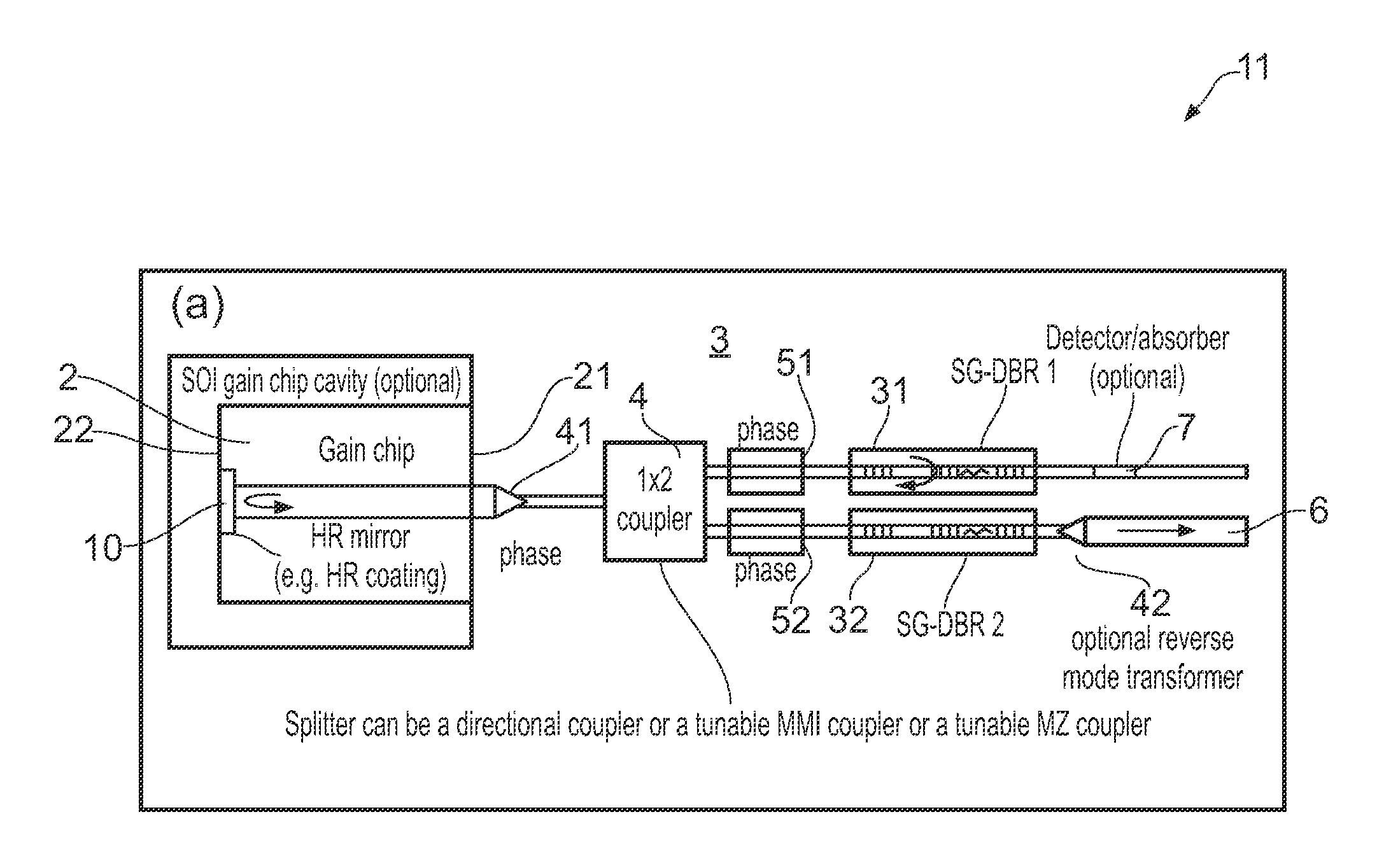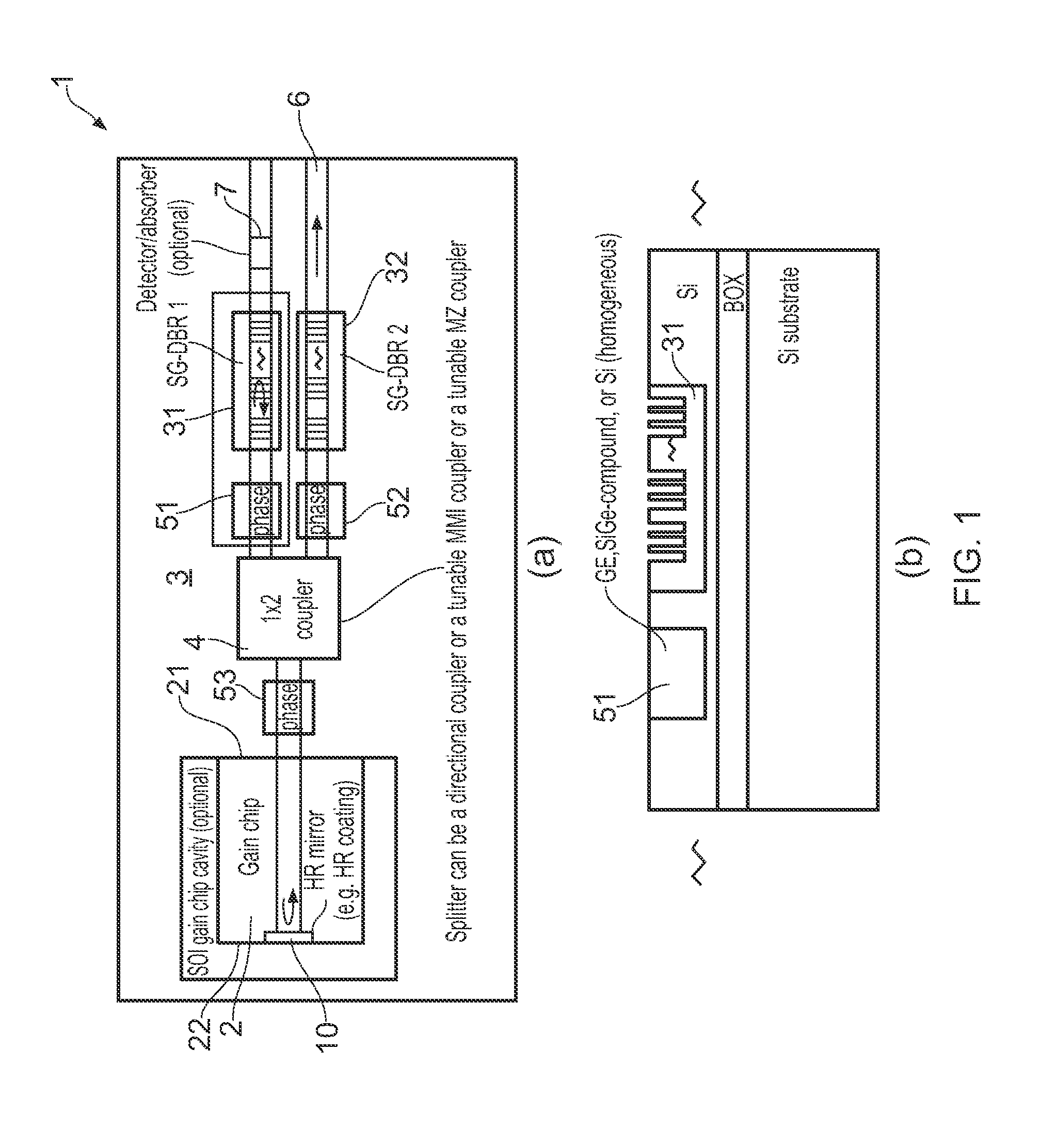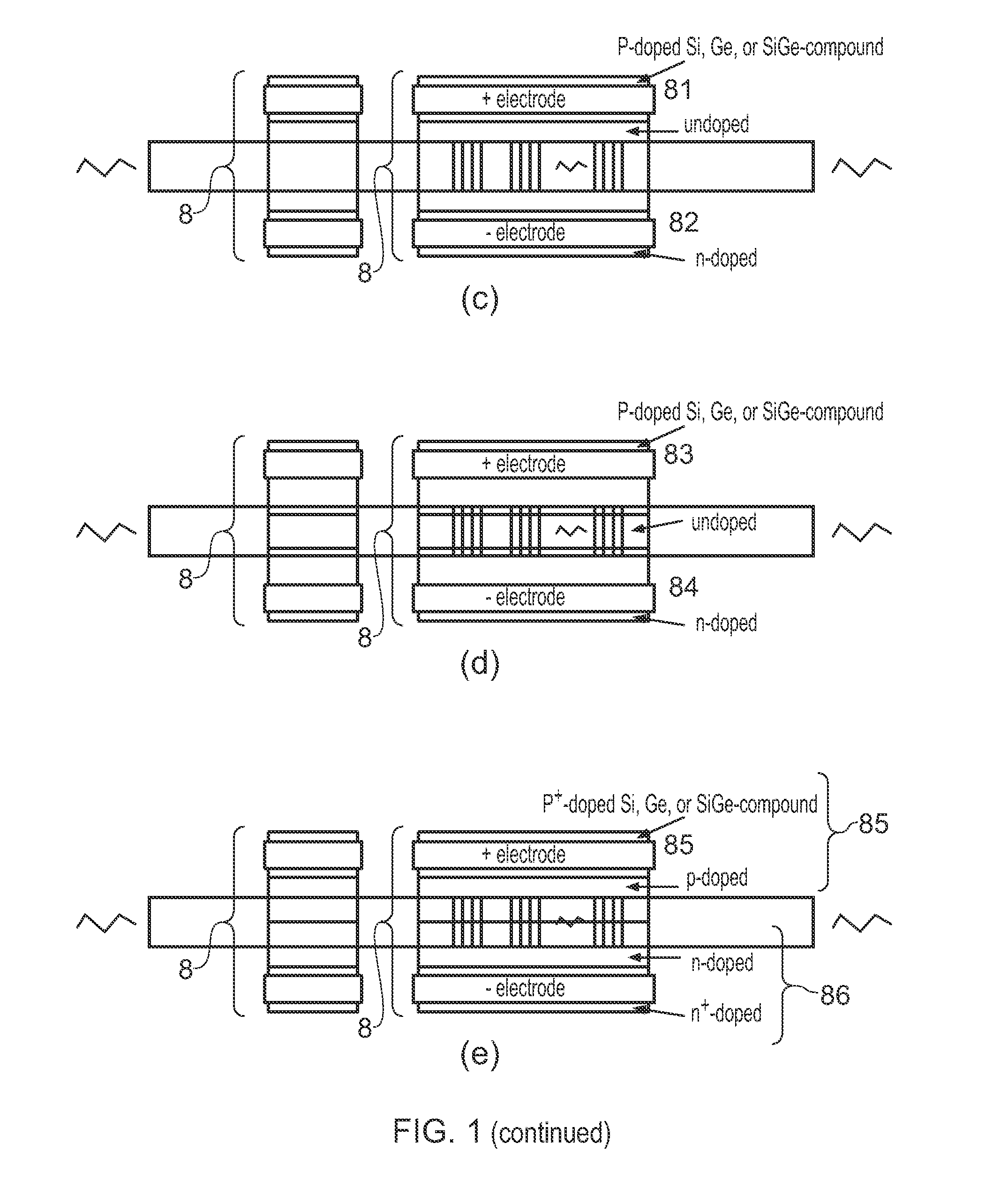Tunable soi laser
a laser and silicon technology, applied in semiconductor lasers, laser details, laser optical resonator construction, etc., can solve the problems of low power efficiency, low power efficiency of laser, and low manufacturing cost, so as to reduce the loss, reduce the power efficiency of laser, and reduce the distance
- Summary
- Abstract
- Description
- Claims
- Application Information
AI Technical Summary
Benefits of technology
Problems solved by technology
Method used
Image
Examples
first embodiment
[0067]With reference to FIGS. 1 and 2, a wavelength tunable silicon-on-insulator (SOI) laser, 1, 11, 12, 112 is shown, the laser comprising a laser cavity, made up of a semiconductor gain medium, 2 and a phase-tunable waveguide platform, 3 coupled to the gain medium.
[0068]The semiconductor gain medium has a front end, 21 and a back end, 22 and a mirror of the laser cavity is located at the back end. In the embodiment shown in FIG. 1, the semiconductor gain medium takes the form of a gain chip and the mirror, 10 at the back end of the cavity takes the form of a reflective surface (e.g. a dielectric coating) directly applied to the back end of the gain medium, in this case a reflective back facet of the gain chip. In the embodiment shown in FIG. 1 (a) the waveguide platform includes an SOI gain chip cavity for location of the gain chip.
[0069]The phase-tunable waveguide platform includes a first Distributed Bragg Reflector (DBR), 31 and a second Distributed Bragg Reflector (DBR), 32. I...
third embodiment
[0084]A third embodiment is described with reference to FIGS. 5 to 7, where like reference numerals correspond to those features described above in relation to FIGS. 1 to 4.
[0085]The third embodiment differs from the first embodiment in that the first Distributed Bragg Reflector is a Sectioned Grating-Distributed Bragg reflector (SG-DBR), 31 and the second Distributed Bragg Reflector is a Digital Supermode-Distributed Bragg Reflector (DS-DBR) 33 operating in transmission. In the embodiment shown in FIG. 5, the two DBRs are arranged in series and each DBR is a phase-tunable DBR so includes a phase tuning region, 8.
[0086]Referring specifically to the DS-DBR of the third embodiment, in FIGS. 5 (c) and (d), the phase tuning region is a p-i-n junction with positive electrodes, 88 located in the p-doped region and negative electrodes, 89 located in the n-doped region. In FIG. 5(c), the phase tuning region of the DS-DBR includes p- and n-doped regions which are detached from waveguide ridg...
second embodiment
[0095]As with the transition region described in relation to the second embodiment, the transition region of this embodiment is a transition from a waveguide of a first height, T1 and first width, w1 to a waveguide of a second height, T2 and a second width w2; the second height being less than the first height and the second width being less than the first width. In this case, the first and second Distributed Bragg Reflectors are located in a waveguide of a second height, T2 and second width w2.
[0096]An optional inverse transition region (or mode transformer) can be used after the SG-DBR mirror (i.e. outside the laser cavity) to expand the mode back to the original waveguide size. Alternatively the smaller waveguide dimensions can continue into the other regions of the SOI chip. This embodiment with reduced waveguide dimensions can produce phase modulators with faster tuning speeds and lower power consumption, at the expense of adding the additional optical loss introduced by the mo...
PUM
 Login to View More
Login to View More Abstract
Description
Claims
Application Information
 Login to View More
Login to View More - R&D
- Intellectual Property
- Life Sciences
- Materials
- Tech Scout
- Unparalleled Data Quality
- Higher Quality Content
- 60% Fewer Hallucinations
Browse by: Latest US Patents, China's latest patents, Technical Efficacy Thesaurus, Application Domain, Technology Topic, Popular Technical Reports.
© 2025 PatSnap. All rights reserved.Legal|Privacy policy|Modern Slavery Act Transparency Statement|Sitemap|About US| Contact US: help@patsnap.com



